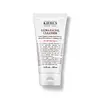What's inside
What's inside
 Key Ingredients
Key Ingredients

 Benefits
Benefits

 Concerns
Concerns

 Ingredients Side-by-side
Ingredients Side-by-side

Water
Skin ConditioningSodium Laureth Sulfate
CleansingDecyl Glucoside
CleansingGlycerin
HumectantCocamidopropyl Betaine
CleansingDisodium Cocoamphodiacetate
CleansingAcrylates Copolymer
Lauryl Glucoside
CleansingPEG-200 Hydrogenated Glyceryl Palmate
CleansingTriethanolamine
BufferingSodium Chloride
MaskingPentylene Glycol
Skin ConditioningPhenoxyethanol
PreservativePEG-7 Glyceryl Cocoate
EmulsifyingSodium Hydroxide
BufferingCitric Acid
BufferingHexylene Glycol
EmulsifyingBehenyl Alcohol
EmollientDistearyl Ether
Skin ConditioningSodium Benzoate
MaskingLaureth-2
CleansingSqualane
EmollientPrunus Amygdalus Dulcis Oil
Skin ConditioningPrunus Armeniaca Kernel Oil
MaskingTocopherol
AntioxidantAscorbyl Glucoside
AntioxidantPersea Gratissima Oil
Skin ConditioningWater, Sodium Laureth Sulfate, Decyl Glucoside, Glycerin, Cocamidopropyl Betaine, Disodium Cocoamphodiacetate, Acrylates Copolymer, Lauryl Glucoside, PEG-200 Hydrogenated Glyceryl Palmate, Triethanolamine, Sodium Chloride, Pentylene Glycol, Phenoxyethanol, PEG-7 Glyceryl Cocoate, Sodium Hydroxide, Citric Acid, Hexylene Glycol, Behenyl Alcohol, Distearyl Ether, Sodium Benzoate, Laureth-2, Squalane, Prunus Amygdalus Dulcis Oil, Prunus Armeniaca Kernel Oil, Tocopherol, Ascorbyl Glucoside, Persea Gratissima Oil
Water
Skin ConditioningGlycerin
HumectantDipropylene Glycol
HumectantCoco-Betaine
CleansingTea-Cocoyl Glutamate
CleansingPotassium Lauroyl Glutamate
CleansingButylene Glycol
HumectantCitric Acid
BufferingSodium Citrate
BufferingNiacinamide
SmoothingHydrolyzed Silk
HumectantPhenoxyethanol
PreservativeLonicera Japonica Flower Extract
Skin ConditioningPerilla Ocymoides Leaf Extract
TonicCitrus Unshiu Peel Extract
MaskingAngelica Keiskei Leaf/Stem Extract
Skin ConditioningGlycyrrhiza Glabra Leaf Extract
Skin ConditioningPrunus Persica Kernel Extract
MoisturisingCoix Lacryma-Jobi Ma-Yuen Seed Extract
Skin ConditioningWater, Glycerin, Dipropylene Glycol, Coco-Betaine, Tea-Cocoyl Glutamate, Potassium Lauroyl Glutamate, Butylene Glycol, Citric Acid, Sodium Citrate, Niacinamide, Hydrolyzed Silk, Phenoxyethanol, Lonicera Japonica Flower Extract, Perilla Ocymoides Leaf Extract, Citrus Unshiu Peel Extract, Angelica Keiskei Leaf/Stem Extract, Glycyrrhiza Glabra Leaf Extract, Prunus Persica Kernel Extract, Coix Lacryma-Jobi Ma-Yuen Seed Extract
 Reviews
Reviews

Ingredients Explained
These ingredients are found in both products.
Ingredients higher up in an ingredient list are typically present in a larger amount.
Citric Acid is an alpha hydroxy acid (AHA) naturally found in citrus fruits like oranges, lemons, and limes.
Like other AHAs, citric acid can exfoliate skin by breaking down the bonds that hold dead skin cells together. This helps reveal smoother and brighter skin underneath.
However, this exfoliating effect only happens at high concentrations (20%) which can be hard to find in cosmetic products.
Due to this, citric acid is usually included in small amounts as a pH adjuster. This helps keep products slightly more acidic and compatible with skin's natural pH.
In skincare formulas, citric acid can:
While it can provide some skin benefits, research shows lactic acid and glycolic acid are generally more effective and less irritating exfoliants.
Most citric acid used in skincare today is made by fermenting sugars (usually from molasses). This synthetic version is identical to the natural citrus form but easier to stabilize and use in formulations.
Read more about some other popular AHA's here:
Learn more about Citric AcidGlycerin is already naturally found in your skin. It helps moisturize and protect your skin.
A study from 2016 found glycerin to be more effective as a humectant than AHAs and hyaluronic acid.
As a humectant, it helps the skin stay hydrated by pulling moisture to your skin. The low molecular weight of glycerin allows it to pull moisture into the deeper layers of your skin.
Hydrated skin improves your skin barrier; Your skin barrier helps protect against irritants and bacteria.
Glycerin has also been found to have antimicrobial and antiviral properties. Due to these properties, glycerin is often used in wound and burn treatments.
In cosmetics, glycerin is usually derived from plants such as soybean or palm. However, it can also be sourced from animals, such as tallow or animal fat.
This ingredient is organic, colorless, odorless, and non-toxic.
Glycerin is the name for this ingredient in American English. British English uses Glycerol/Glycerine.
Learn more about GlycerinPhenoxyethanol is a preservative that has germicide, antimicrobial, and aromatic properties. Studies show that phenoxyethanol can prevent microbial growth. By itself, it has a scent that is similar to that of a rose.
It's often used in formulations along with Caprylyl Glycol to preserve the shelf life of products.
Water. It's the most common cosmetic ingredient of all. You'll usually see it at the top of ingredient lists, meaning that it makes up the largest part of the product.
So why is it so popular? Water most often acts as a solvent - this means that it helps dissolve other ingredients into the formulation.
You'll also recognize water as that liquid we all need to stay alive. If you see this, drink a glass of water. Stay hydrated!
Learn more about Water